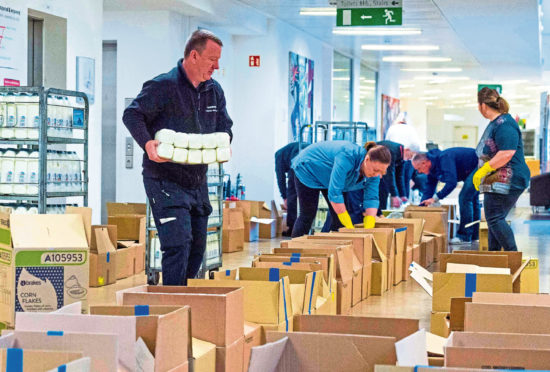In this time of global crisis, the world turns to its farming community, as it has done throughout history.
Both world wars and the Covid-19 pandemic have put huge strain on the economy and the social behaviours of the UK population. The constants in both are first class medics and an efficient and adaptable agricultural industry.
On March 11 Chancellor Rishi Sunak delivered his first budget. Contained within his speech were various measures which support farming, namely the increased agricultural buildings allowance up from 2% to 3% and the exemption from the removal of tax relief on Red Diesel. With regards to staffing, the increased national insurance levels and additional £1,000 employer allowance will both help mitigate rising staff costs.
Fast forward three weeks and the budget is a distant memory, and Covid-19’s grip on the country is tightening.
While agricultural businesses are better placed than most to ride out the financial storm, there is support out there. The various mechanisms offered by the government may look like they don’t apply to agriculture but for those with diversification on farm, a review of the support packages is worthwhile.
Farmers with borrowing on variable rate loans will have seen indirect support with the historic cutting of interest rates by the Bank of England to 0.1%. The ability to defer VAT payments due between March 20 and June 20 for business that have storage income or do farming contracting will assist cashflow further.
Self-assessment tax liabilities due in July 2020 can now be deferred until January 2021.
The government have announced their plans for supporting all self-employed businesses, giving all farming partners who earn under £50,000 a year the ability to claim a taxable grant equal to 80% of the farms’ three years averaged taxable profits, payable for three months up to a maximum of £2,500 per month.
This scheme will be administered by HMRC who will contact businesses in June based on eligibility. While at the time of writing the finer detail of the scheme and the eligibility criteria have not yet been released, it is our view that businesses may be asked to prove that Covid-19 has had a negative impact.
Agricultural businesses who employ workers in any area effected by Covid-19 should be aware that the government is supporting them through the Job Retention Scheme. The scheme gives businesses the ability to furlough full-time or part-time employees who were on the payroll as at February 28 2020. It also covers those on flexible zero-hour contracts. Furlough lasts for a minimum three-week period. Farming businesses should seek HR or legal advice prior to progressing with a furlough claim.
With regards to calculating the claim, HMRC will send a grant to cover 80% of an employee’s regular wage subject to a maximum cap of £2,500 per month for an initial three-month period. For those farming businesses that rely on tourism this may be enough to keep good staff during this period.
The Scottish Government have set out a £10,000 grant for businesses who receive the small business bonus or Rural Rates relief. Therefore farmers who have non-agricultural activity on farm should check their businesses rateable values to see if they qualify.
Scottish farmers continue to play a vital role in keeping the country fed. The panic buying witnessed in supermarkets across the country only goes to show how much farmers are needed. Given that public opinion generally took the industry for granted, perhaps public perception may be altered in future.
Mark Gibson is a partner with Thomson Cooper.










